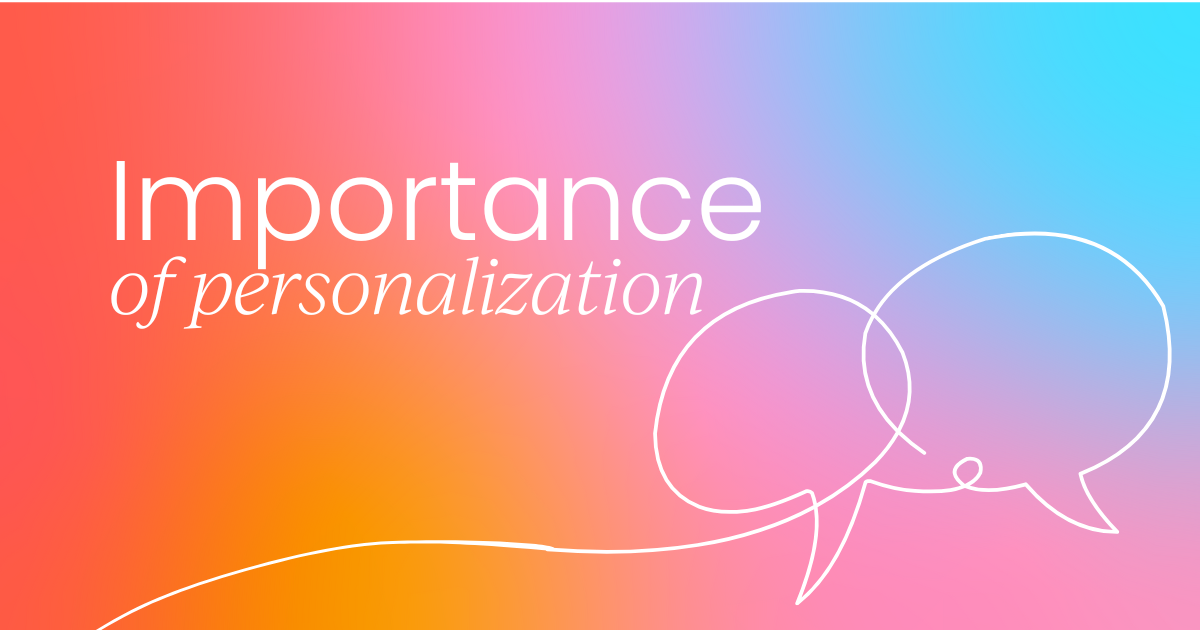How can businesses create personalized, interactive marketing without third-party cookies? Laws such as the General Data Protection Regulation (GDPR) and the California Consumer Privacy Act (CCPA) have forced Google’s hand. Even before the European Union (EU) fined them, Google announced plans for cookie deprecation.
The date they’ll stop using third-party cookies keeps getting pushed out, giving marketers a little more time to find other ways to reach target audiences. Interactive marketing is one way to enhance personalization strategies in preparation for when they can rely less on cookies.
This article will look at what cookie deprecation is, when it will happen, and how marketing professionals can still effectively reach their target audiences. Find a list of techniques to offer personalized options that engage users.

About cookie deprecation
In 2024, Google phased out third-party cookies for 1% of Chrome Stable users. They've urged people to prepare by using private alternatives and announced the phaseout will move to 2025. Before business owners panic, understand that first-party cookies are still acceptable. The data you collect from people visiting your own site is the crucial detail you need to keep content and messages relevant.
Some developers on the forums argue that the change will lead to more detailed information rather than the generic and dated details coming from other sites and services.
Deprecation helps with some of the privacy concerns brought up by users and could prevent another fine by the EU under the GDPR and avoid issues with the CCPA. Google might also be looking for ways to regulate the vast amounts of information it gathers for fear of antitrust lawsuits in the future. Although some changes are due to Google protecting itself, it will still collect data.
How does third-party cookie deprecation affect you? You'll no longer be able to track users across multiple websites when generating ads. When creating buyer personas, you'll have less behavioral analytics and will have to rely more on details collected from your own site. Smaller businesses may need help implementing the changes and see decreased website traffic and conversions.
Why personalization matters
Consider the hundreds and even thousands of times a day you encounter some type of marketing. You wake up to a radio station touting the latest special at a local diner. You check your email and see several sales from various brands. You jump on social media and get ads targeted to your preferences.
As you commute to work, you see billboards and hear ads as you listen to your favorite podcast. With all the daily noise, people tune out a lot of the information. When you truly understand your audience and create a highly targeted marketing campaign, they’re more likely to hear you through all the clatter.
Personalization makes the user feel understood. You can speak directly to a pain point and offer a solution.

How to leverage interactive marketing
Learning how to create content that speaks to the needs of your users is often intuitive. If you notice seven out of 10 customers search your site for the term “help with dinner,” you know most of them need ideas for easy meals.
Once you understand their pain points based on searches and discussions with customer service or sales representatives, creating offers and content that speak to each one is much easier.
Try buy one, get one
Let's say you sell prepared meal kits for busy working families. You also have a secondary detail – these families are reluctant to spend the extra money to try your meals. However, if they taste how delicious the food is and see how simple it is to grab and go, they'll be hooked.
Consider offering first-time users a limited-time buy-one-get-one (BOGO) discount to draw them in. Limiting how long the special is available creates a sense of urgency and may encourage them to buy more than they normally would.
Implement new technologies
If you’ve always used third-party cookies to target new leads, you may feel uncertain about this change. Fortunately, advances in artificial intelligence (AI) and machine learning (ML) are driving marketing automation.
You can use an AI chatbot to gather customer details and create new messages. ML allows the bot to ask more pertinent questions over time as the computer figures out what data you need to better analyze customers.
You can take any insights and apply them across any platforms you use, including advertising on social media sites.
Develop collaborative data-sharing
Although Google’s post-cookie world looks a bit different to marketers, the change is an excellent opportunity to develop collaborations with like-minded business owners.
First, find brands that offer items to similar audiences but are not competition. An example might be a meal prep company teaming up with a cookware business. You would share insights about customer behavior.
As long as you are transparent with customers and allow them to opt out, you can even share email lists and other insights that might help with marketing efforts and create a more personalized experience for users.
Take over a social media group temporarily
Around 5.17 billion people use social media in 2024, with an estimated 6.05 billion users by 2028. Facebook alone has a group for almost any topic you can imagine. Find a group with people interested in what you sell and talk to the administrators about taking over the page for a few hours.
During your “take over,” you’ll share interesting information, interact with users and give them a special offer. Going back to the meal prep company example, you might seek out a group of working professionals.
You would give them some details on how your service saves them time and maybe offer a few tips for last-minute meals when they haven’t planned ahead. Customize everything in the exchange to what they need, or you risk sounding spammy.
It’s a good idea to observe any group you plan to take over for a while to get a feel for the interactions and what others post. Tailor your language and message to what gets the most responses. If people love a good recipe, share one. If they comment most on the questions, come up with some that tie into your product.
Team up with influencers
Look for a micro-influencer in your industry. Although some influencers have huge followings, you’ll pay more to work with them. A micro-influencer may have a smaller audience, but they understand what they need and want. They keep their followers highly engaged.
When finding an influencer to work with, you want one who will work alongside you to develop the best marketing campaign for their users based on data they’ve collected over time. Their recommendation to try your product may hold more weight than any offer you can send their way.
One method of gathering data from the influencer’s followers is to send those interested to a form to answer a few questions for a discount or special offer. This technique turns a third-party marketing event into a first-party data collection method.

Segment your audience
You’ve likely heard the advice to segment your mailing list, but you should segment your users everywhere you reach them. Your website should offer options for different buyer personas, with content personalized to each need.
Look for behavior patterns when segmenting your audience. Consider sites like Amazon and how they recommend products, movies and music to users. The company developed software that pays careful attention to what you’ve watched recently and suggests movies you might enjoy.
You should do something similar with your site, offering new products you think past buyers might enjoy and creating content that addresses their questions and solves problems.
Putting it all together
In a post-cookie world, A/B testing becomes more crucial. The only way to know if an ad campaign is effective is by setting goals and tracking conversions on your website.
When Google finally does away with third-party cookies, you’ll land on your feet if you plan in advance and begin collecting first-party data now. You may even find that your efforts have a higher success rate with deeper customization.
Do you want to save time and money, and drive better results in your marketing campaigns?
Our ebook has plenty of actionable insights, tips and tricks, real-life examples, invaluable prompts, and more.




 Follow us on LinkedIn
Follow us on LinkedIn



